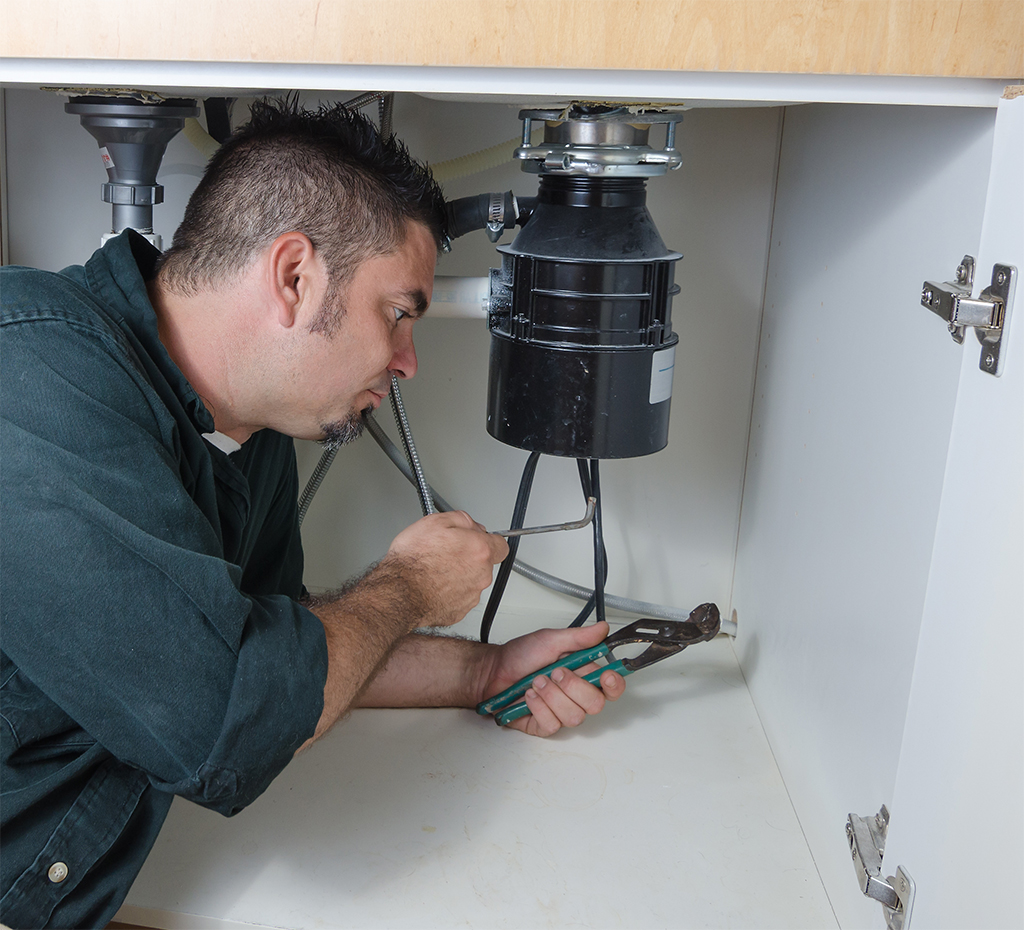When To Replace Your Toilet Tank: Advice From A Plumber

A toilet is one of the most critical items in your house. You rely on your toilet daily but regularly forget about it until you encounter a problem. Thankfully, toilet components are built to be sturdy and can last for more than six years with no issues. However, your toilet tank can get damaged and cause your toilet to malfunction. This could lead to problems such as difficulty flushing, water pooling around the base of your bathroom, and high water bills. If your toilet tank is damaged, you must call a professional plumber to fix or replace your toilet tank. This article discusses the signs that indicate your toilet tank needs to be replaced and provides tips for maintaining your new toilet tank.
Time to Replace Your Toilet Tank?
Cracks or leaks
Sometimes cracks in your toilet tank can unexpectedly develop, causing water to leak. You can find these clacks either below or above the water level. They can also be found in the exterior or interior of your water tank. Cracks below the water level are difficult to see and can present various problems to house owners. This crack develops due to numerous factors. This includes age, where the tank starts to wear and tear over time, careless handling of the tank during repair, and dropping something in the water tank to cause pressure build-up. If you find cracks in your water tank, replacement may be your best choice. Call a plumbing expert, and they will help you replace your cracked, leaky toilet tank.
Age
Nothing lasts forever. As toilet tanks age, they become more vulnerable to cracks. You can expect your toilet tank component to last 5 to 10 years. However, using toilet tanks frequently, using hard water, and adding toilet bowl cleaner tablets to the tank can shorten its lifespan. Aging can make your tank start cracking. If cracks are small, then they can easily be repaired. However, if a crack develops different threads resembling leaf veins, it is bad news. You require a total replacement of your toilet tank. Moreover, old toilet tanks can start wobbling and no longer hold enough water for flushing. A trusted professional can replace your old toilet tank with a new one to keep your toilet operating at its best.
Frequent Repairs
You have fixed the toilet tank valves and floating balls. And you have even repaired tank cracks. And yet water is still leaking. It’s probably time to invest in a new toilet tank. Maybe you have done a great job keeping your tank in check, but you have frequently been repairing your toilet tank. These repairs can become a higher cost than getting a new toilet. A professional will advise you on the best toilet tank for your bathroom, and it will require minimal maintenance. In addition to that, they have vast knowledge and experience to properly install your new toilet tank, which helps avoid frequent repairs.
Remodeling
If you want to go the extra mile to update your toilet, it’s time to replace your old toilet tanks with modern tankless toilets. These toilets look more stylish than toilets that use toilet tanks to store water. Ideally, tankless toilets work directly where water comes out of your pipes and flush your bathroom at a great force. When the process is through, very little water is left in the bowl. Many house owners consider replacing their old toilet tanks with tankless toilets as they use less space, require minimal maintenance, and will save you more money on water bills. Moreover, tankless toilets look great in your home and are less likely to leak. However, a professional plumber must access your plumbing system and install these toilets for the best results.
High Water Bills
The most common cause of high water bills is leaky toilet tanks. A continuously running toilet can waste more than 100 gallons of water daily. Moreover, Old or worn-out gaskets and washers in the toilet tanks can cause leaks. If you are experiencing high water bills due to leaky tanks, it’s time to call the plumber. They will assist you in fixing or replacing the leaking tank with a new one, which will help you avoid paying high water bills.
Tips for Maintaining Your New Toilet Tank
If you fail to care for your toilet tank, it will keep any dirt, mineral build-up, and bacterial contamination in the tank. These poor conditions will cause your tank to rust and stain, which will eventually cause cracking. A toilet tank can also become a bacterial and fungal factory. Toilet water can develop mildew and mold, especially if the toilet is not flushed often. Individuals who are sensitive to mold can become sick. Here are some tips on how to maintain your toilet tank:
- Regular cleaning: Regular cleaning of the toilet tank can help reduce rust stains in the toilet bowl and freshen your bathroom air. You will also eliminate dirt, dust, and unpleasant stains that may have dropped down the tank. Plumbers recommend using baking soda and vinegar to remove grime and stains from your toilet bowl. You must clean your tank at least once every two months to ensure it runs smoothly.
- Leak checks: Check toilets tanks frequently before leaks cause significant fixture failures. You need to check the exterior and exterior parts of the tank. You can also schedule regular professional maintenance with an expert to ensure your plumbing system, including toilet tanks, runs well.
Contact Us for Toilet Tank Replacement Services
If your water tank is leaking and you need toilet tank replacement services, do not hesitate to contact Benjamin Franklin Plumbing of Mohave County. Our plumbing experts have years of experience and knowledge to identify your tank problem and make the necessary repairs or replacements. You can trust us to deliver nothing but the best. We also work to perform annual maintenance for your plumbing fixtures needs. To schedule an appointment with one of our experts, message or call us today.
See our most recent blog on this topic here.
Find out our service area here.
Photo By Shadow Inspiration at Shutterstock

A Plumber‘s Guide On The Cost Factors To Consider Before Installing A Garbage Disposal System In Your Kitchen
Are you in the process of deciding whether or not to install a garbage disposal system in your kitchen? You are probably weighing the pros and cons of this installation, like fewer trips to take out the trash, improved hygiene conditions at home, and greater convenience while cooking. However, high upfront costs can also be a major point of concern. Before calling a plumber to install one, it is important to understand all the costs involved and make an informed choice that best serves your long-term needs. Read on for a breakdown of the expenses for installing a garbage disposal system in your kitchen.
Modifications on Your Plumbing System
When installing a garbage disposal system, the process involves connecting the system to the kitchen sink’s drain and the electrical system. Additional plumbing modifications will be needed if your kitchen sink plumbing is incompatible with the disposal system. For example, if the sink’s drain line is not aligned properly with the disposal’s inlet port, your plumbing professional must reposition the drain line. The task is complex and takes time. Moreover, if your plumbing system is undersized or outdated, an upgrade will be needed to accommodate the additional load from your new garbage system.
The cost of the plumbing modification will largely depend on the condition and age of your plumbing system and the complexity of the work needed. Therefore, before the installation, call an expert to assess your plumbing system and determine if any modification will be required. If there are any, consult a licensed plumbing professional to estimate the costs involved during the installation.
Cost of Labor
A wide range of tasks is involved when installing a new garbage disposal system. All the tasks are complex, and an expert should do them with the right tools and skills. When you hire a professional, consider the cost of labor, which varies depending on the experience, time taken, and other factors.
The installation cost can range from a few hundred dollars to thousands, depending on the job’s complexity. Remember that some professionals might charge extra fees for services such as removing and disposing of the old unit or modifying your plumbing system. Therefore, consider the labor cost when installing a garbage disposal system. If you don’t have experience in plumbing or electrical work, it is good to hire a certified plumbing expert to ensure the installation is done correctly.
The Condition of Your Sink
When installing a new garbage disposal system, you must ensure your kitchen sink is compatible with the new unit. If your sink is outdated or incompatible with the new garbage disposal, you will need a plumber to replace it for the system to work smoothly. For instance, if the sink doesn’t have a mounting assembly or the flange is incompatible with the new system, you will be forced to buy a new sink or separate mounting assembly for secure mounting. The cost of the new sink will depend on the type and quality you want. If the mounting assembly has an issue, replacing the sink is unnecessary. Instead, only purchase a separate mounting assembly.
Cost
The cost of a new garbage disposal system varies depending on the model, brand, and features the system has. Also, consider the cost of professional installation before buying the new system. Find a garbage disposal system that fits your budget and needs. Contact a plumbing professional if you need help choosing the right garbage disposal system that suits your budget needs. Whether you want a low-priced or higher-priced model, an expert will help you make the right decision.
Type of Garbage Disposal
The type of garbage disposal system is a significant cost consideration when installing one in your kitchen. There are two main types of garbage disposal systems; continuous feed and batch feed disposal systems. The continuous feed garbage system allows you to dispose of food waste while the unit runs continuously. It is one of the common garbage disposals and plumber-recommended because of its convenience. Continuous feed garbage disposals require a constant stream of water to enable waste movement and prevent clogs in the system. However, this type can be a bit unsafe because it doesn’t have a cover that prevents accidental contact with the blades.
On the other hand, the batch-feed garbage disposal system allows you to dispose of food in batches rather than continuously. It is common in households with children and pets, as it has a cover that prevents accidents. Furthermore, it is efficient and much safer to use. So, before you choose a garbage disposal system, consider the type you want because garbage systems come at different prices. The type of garbage system you want will depend on your budget needs and the amount of food waste your kitchen produces.
Permits and Inspections
If permits and inspections are required before installing a new garbage disposal system, you will need to factor in the cost of obtaining the permits. The cost of the permits and inspections will depend on your location and the type of permits needed. Also, remember that you may need to pay extra fees if your inspector needs to do follow-up inspections or any corrections. Ensure you obtain all the necessary permits and inspections, as failure can lead to penalties. That is why it is important to hire a professional plumber to undertake the installation for you. They understand all the permit and licensing requirements and will adhere to them before starting the project.
Call Us Today for Garbage Disposal Installation
Installing a garbage disposal system in your kitchen is a complicated task that requires the help of an expert. Instead of doing the task yourself, why not hire Benjamin Franklin Plumbing of Mohave County today? We are a licensed plumbing company with experienced garbage disposal installation professionals. Call us today, and we will ensure your garbage disposal is installed safely and working correctly. We offer free consultations on all our services.
See our most recent blog on this topic here.
Photo By David Spates at Shutterstock

Secrets Of Our Professional Drain Cleaning Service
What’s going on in your home’s drains? Would you dare to watch as our video inspection gear travels down your drains to explore and identify clogs, pipe damage, and plumbing condition? As plumbers, at Benjamin Franklin Plumbing of Mohave County we’re used to the journey down drains and sewers. Our drain cleaning service experts evaluate what they see in the pipes, preparing to break up accumulations of materials and flush them away. We use a variety of techniques according to the problem at hand, which is why we get up close and personal to see what it actually is. After all, there’s a big difference between a big mess of organic matter to dislodge and release, and a large piece of plastic that’s going nowhere until it’s pulled out.
Through the Twisty Maze of Drain Plumbing We Go
Your drain plumbing is complex. It consists of a central line leading to the sewer pipe, along with branches throughout the house leading to fixtures on each floor. Joining them are various types of junctions, where wastewater takes a turn before continuing on. Each piece of this puzzle has to be laid out according to requirements, what experience has told plumbers produces reliable flow not only of water, but of the waste it carries. To enable this flow downward there are vents up top, an essential part of the drain equilibrium. Our video eye can tour these pipes and look for problems, identifying where clogs and potential future blockages are located, and what they are made of.
Seeking Out Clogs and Plumbing Problems
A thorough drain cleaning service identifies and targets clogs and growing accumulations of material in your pipes. It may be helpful to check back after work has been done to make sure they’re broken down and flushed away, or pulled out. The goal is thorough clearing of your home’s drain pipes, so that you’ll have smooth flow down the line now, and any material that seeks to start trouble will have trouble holding on. Roughness or irregularity of the pipes may provide places where flow slows and material can still cling, so we’ll make note of issues we see along the way. In some cases, they may indicate a need for repairs before too long.
What It Looks Like from the Inside
In the worst case, looking down the pipe may show little or no opening for the wastewater to flow down. It’s clogged arteries for your home, and you can see pretty easily how slow draining sinks and toilets could come from that. When these narrow spots are in the wrong place, they can force flow that’s coming down the pipe to redirect up another pipe instead of down the main drain. This shows as a flushed toilet that leads to a spray from the shower drain, and other strange and annoying drain behavior. In addition to narrowing of the pipe walls, there may be patches of grease and accumulated material on them. If an article made of solid material gets stuck in a narrow spot, it can make a pretty tough clog. On video, you might see a plastic toy, or a wipe lodged and stuck.
Types of Clogs We Find and What We Do About Them
With the varying types of clogs and obstructions in the pipe, at different locations, you can imagine that one solution doesn’t apply for all cases. This is one reason why plungers work sometimes, and make things worse at other times. We have powerful tools that slip through and dislodge stuck material, or chew through until it breaks apart and is flushed down the drains. Extracting stuck objects, especially lost valuable items, is also an option, and being able to see them helps enormously! Our clean sweep tool is hydro jetting, a water spray with thousands of pounds per square inch of pressure. Taking a video look after that can show an amazing difference from the original heavy accumulation lining the pipe walls after a year of drain activity!
Sometimes the Sewer Line Has a Great Big Clog
Backups like the ones that are caused by blockages in pipes common to multiple fixtures also occur when the sewer line is clogged. This can be caused by damage to the sewer pipe that requires repair, but sometimes an accumulation of items, bound by fats and grease, can build up to a very large size. There are legendary stories of ones weighing hundreds of pounds found in city sewers. Powerful hydro jetting technology can dig away at these large clogs until they break apart and flow away as well. Video inspection comes in handy here too, allowing us to recognize whether it’s a large clog, tree root, crushed pipe, or other problem that’s causing the backup. Once we know for sure, we can confidently take the right action to remedy the situation.
What If the Pipes Themselves Are Getting Tired?
Rough pipes not only make it easier for clogs to form, they also indicate that the pipes are getting tired, either corroding if they’re metal, or degrading if they’re plastic. In fact, certain types of plastic have been shown to react poorly to chlorinated city water and degrade much faster than expected. Our plumbers will make note of issues and report any concerns of current or future leaks from pipe problems.
Looking After Your Drains with a Plumber’s Eye
Experience has always been our best tool in anticipating and handling your drain problems. Video has made that faster and easier, and we’re proud to include it as part of our thorough drain cleaning service!
Are your home’s drains having trouble? At Benjamin Franklin Plumbing of Mohave County, we can help with backups and clogs as they occur. We also provide preventive drain cleaning service from year to year as a preventive measure. Let’s take a look inside your pipes and clear them, call today!
See our most recent blog on this topic here.
Photo By durantelallera at Shutterstock

When Is It Time To Reach Out To A Plumber For An Upgrade?
Plumbing upgrades can be expensive especially when it involves getting replacements for your appliances or plumbing pipes. It’s important to know when it’s really time to get an upgrade to avoid spending money when you don’t have to yet. Read this article for tips on when to upgrade your plumbing. If you have questions, please don’t hesitate to get in touch with us today.
Signs It’s Time to Upgrade
Below are the signs it’s time to call professionals to inspect your plumbing system for a possible upgrade:
Old Pipes
When you notice rusty water coming out of your pipes, call for an inspection so that a professional can thoroughly inspect your plumbing for signs of corrosion. Discolored water is one sign it’s time to get an upgrade. Perhaps you’ve moved into an old home and still have galvanized pipes installed. This type of piping material isn’t really recommended for it’s more susceptible to damage and rust. Licensed professionals would recommend you get modern piping material such as copper or PVC piping.
You may think getting a replacement isn’t necessary because there are no leaks in your pipes. But remember, old pipes are also susceptible to leaks and imagine how much it would cost when your pipes leak in the basement and you have some appliances stored there? To avoid unnecessary expenses, we suggest you call a professional instead for a pipe inspection or a possible replacement.
Don’t worry, our plumbing experts are quite experienced and knowledgeable about piping. We can help and our team is just a call away if you need assistance. Call us today so we can inspect your piping and recommend the best solutions.
Constant Repairs
Calling a plumber regularly for repairs isn’t a good sign. When you keep having issues with your plumbing system, this could be due to outdated plumbing. Why not get in touch with a plumbing expert so they can advise whether it’s time to replace that old appliance or fixture? If you’ve been calling for water heater repairs more than once a year, consider getting a replacement to save more money. It would be more cost-effective to get a new unit than keep calling a professional to repair your unit.
Call us if you need help assessing whether it’s better to keep or let go of your old plumbing appliances. Our plumbing experts are the best at what they do and they’re experienced with most brands of plumbing appliances or fixtures as well. We can check on them and recommend the right solution to help you save more money on your plumbing.
Leaks
Leaks are definitely a sign it’s time to upgrade your plumbing. Although homeowners may resort to getting a plumbing repair first — and this is okay. However, if you want more efficient plumbing and peace of mind, getting a replacement is a good idea.
It’s also better for homeowners to be always mindful of their plumbing. For example, when it’s almost winter, they should start insulating the pipes so that they don’t freeze when the temperature reaches below zero. Don’t forget to also include outdoor faucets and your water heater as well. Routine plumbing inspections can also avoid costly plumbing repairs. Call a plumber to inspect your entire plumbing system to identify possible problems that might lead to a costly plumbing emergency. And that’s what we’re here for. We offer a wide range of plumbing services including routine plumbing inspections. Don’t hesitate to get in touch with us if you need help with your plumbing and we are more than happy to assist.
Why Consider Upgrading to a Tankless Water Heater
If you have a tank-type water heater that’s more than 10 years old and is no longer that efficient or you keep calling a plumbing expert to get your unit repaired, we suggest you consider buying a new replacement. Compared to the tank-type water heater, the tankless water heater lasts longer — that’s up to 20 years as opposed to just 10 years for the tank-type water heater. The tankless unit requires less maintenance and you don’t need to have a bigger space for it because you can just install it on the bathroom wall. Also, there’s no standby heat loss with the tankless water heater as you’re only consuming electricity or gas when you actually turn on the unit, making it the most energy-efficient option. The only downside is that it costs more but you get to also save more in the long run because it’s more energy-efficient. If you need a water heater installation, please don’t hesitate to get in touch with us today so we can help.
Should You Get a Sump Pump?
If your home has a basement and there’s no sump pump installed yet, it’s highly recommended to install this safety device to avoid flooding in your home. Basements are used for storing old belongings and perhaps appliances or maybe you have your laundry area in the basement. If this is the case, getting a sump pump is highly recommended. You need to also get a sump pump upgrade especially when your area gets a lot of storms. However, do make sure to maintain the unit to avoid malfunctions. You can test your sump pump by pouring water into the sump pit and checking if the device can remove the water from the pit. If there are issues, please contact a plumbing expert right away to inspect your unit. If you just got a new one, don’t forget to only hire a licensed professional for it.
Contact Benjamin Franklin Plumbing of Mohave County Today
Do you need a plumber for your home? You’ve come to the right plumbing team. Our plumbing experts never cut corners when it comes to plumbing inspections, repairs, replacements and installations. We work hard to make sure all of our customers are happy with our services. If you need help with plumbing upgrades or repairs, call us right away. We will quickly send someone over to your location to resolve the problem quickly.
What are you waiting for? If you’re looking for a reliable and trusted plumber, call Benjamin Franklin Plumbing of Mohave County today for an appointment.
See our previous blog on this topic here.
Photo By Min C. Chiu at Shutterstock

How To Start A Plumbing Company
Plumbing is one of the most sought-after professions in the construction industry. A plumber is responsible for installing and maintaining plumbing systems for commercial and residential properties. Due to the increased demand for these professionals, the industry has seen an increase in plumbing companies.
Setting up a successful plumbing company goes beyond registering your entity with relevant bodies. There are factors you need to consider when opening your service; this way, you can compete against established companies with market dominance.
Once you set up your mind on a plumbing business, you need to review the various sectors in this industry, including sanitation, water supply, service and repair, heating and cooling, gas installation, and drainage systems. Specializing can help build your brand, setting you apart from your completion.
Tips on How to Set Up a Plumbing Business
Identify Your Niche
The first step in setting up a plumbing company is identifying your niche. Most plumbing services revolve around repairs and drain cleaning, meaning there is a lot of competition in the market. Basing your business on common plumbing issues leaves you open to serious competition, hence the need to specialize.
Before registering your company, research various plumbing components to find sections with limited players, for example, providing custom bathroom fittings or pool construction. Your area of specialization can further be broken down into commercial areas such as hospitals and schools or domestic services. No matter your choice, it’s advisable to pick an area you are comfortable and confident enough to deliver outstanding results.
Training and Experience
Plumbing is an acquired skill meaning you have to learn and practice it to master the skills. If you’re interested in plumbing, you should train and get experience handling multiple cases. Handling different cases allows you to find a niche you can specialize in.
There are different ways to train and get experience to become a plumber. You can go to a technical institute where you can learn from professionals or learn as an apprentice in a plumbing company such as Benjamin Franklin Plumbing of Mohave County.
Joining a plumbing business gives you firsthand experience allowing you to learn on the job. Training and experience add value to your business and position you as an expert in the field. Keep in mind that training also helps you secure your license since you are subjected to a series of tests to gauge your skill set and grasp of plumbing issues.
Legal Obligations
The next step is handling legal obligations related to setting up a business, specifically a plumbing business. You need to submit several documents to support your applications and receive clearance certificates. These certificates are important when securing plumbing contracts and are submitted to construction companies to show you’re cleared for business.
To operate your plumbing business, you must present documents such as plumbing permits, licenses, and contractor licenses. Secure a Tax Identification Number and liability before working on your first project. When dealing with legal obligations, remember to trademark your logo to help with brand identity and promotion.
Create a Business Plan
A plumbing business operates similarly to any other business and needs a roadmap to guide operations and expenses. A business plan not only contains your financial projection but also it offers a guideline on service delivery and your plans for the business.
When developing a business plan, you need to conduct in-depth research on the plumbing business. This is where you identify your niche based on your skills, experience, and market. Highlight your current and potential resources to explore to help with business growth and development. Your plan should also include the number of employees, equipment, projected salaries, location, and marketing strategies.
Create Business Website
To effectively promote your plumbing business, you need to set up an online presence. While social media provides a perfect avenue to reach potential clients, you need an official website on which clients can access information about your company and services. The best part about having a website is that you can link to other platforms, increasing your reach.
In the modern era of information technology, a potential client is likely to look up your business on the internet before committing to a contract. A user-friendly website with quality information on plumbing helps boost customer confidence in your business. When more people visit your website, you’re likely to rank high in search engines, making it easy for customers to find you.
When designing your website, include all relevant information related to your business, including contact details, services, price packages, and terms and conditions.
Employ Marketing Strategies
Marketing is the backbone of every business. An effective marketing strategy increases your conversion rates and drives revenue. There are different marketing strategies you can employ, including social media marketing and the distribution of flyers. As a new business with a limited budget, you should consider free online marketing tools to help you reach your niche.
Social media has proven to be one of the most successful marketing avenues for upcoming businesses. With the right campaign, you can generate leads and convert them into sales. The secret to social media marketing is creating accounts on popular platforms and posting content relevant to your specialty regularly. This move sets you up as an industry expert, driving more traffic to your website and, in turn, increasing sales.
You should also hand flyers to customers within your service area informing them of your location, services, and prices. This is a good way to announce the launch of your business to locals. Flyers are also considered a low-budget marketing approach, meaning you don’t have to spend a lot to get your message through.
Starting a successful plumbing company is complex and needs careful consideration. One needs to do a lot of research and specialize in what they do best to dominate the plumbing industry. Contact us at Benjamin Franklin Plumbing of Mohave County for more information on how to set up and run a plumbing business.
See our most recent blog on this topic here.
Photo By concept w at Shutterstock
Check out this tip!

















